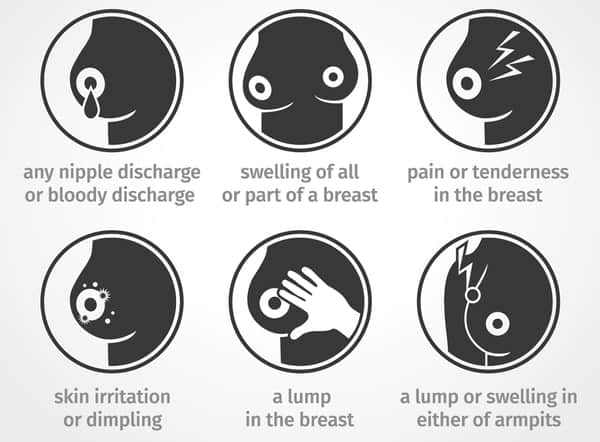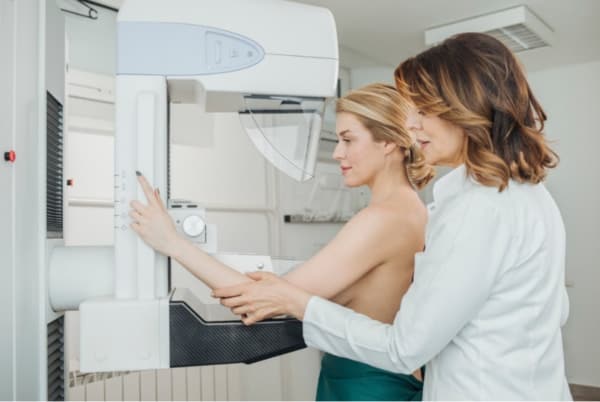
Breast Cancer Awareness
October is Breast Cancer Awareness Month, which is an annual campaign to increase awareness of the disease. It also encourages women to make healthy lifestyle choices and regular breast examinations including mammograms to detect early breast cancer, when it is most likely to be curable.
Do You Know?
- Breast Cancer is the no.1 cancer killer of Singaporean women.
- 1 in 11 women will develop breast cancer in their lifetime.
- Not all breast cancer is hereditary.
- Not all breast cancer lumps are cancerous.
- Not all breast cancer lumps are painful and fast growing.
- Monthly breast self-exam (BSE) is important for women in their 30s. It is also important for women to know how their breasts normally look and feel and should report ANY breast change promptly to their doctor.
- You still need mammograms after menopause.
- There are things you can do to lower your breast cancer risk.
- Early detection and treatment can make all the difference and increases breast cancer survival rate.
How Common Is Breast Cancer in Singapore?
- Breast cancer is the most common cancer, and the most common cause of cancer death among women in Singapore regardless of ethnic origin. Between 2010 – 2014, more than 9,200 women were diagnosed with breast cancer, accounting for more than 25% cancers diagnosed in Singapore women.
- Compared to 2005-2009, there was an increase in breast cancer patients’ survival rate across all ethnicity and age groups except those aged 65-74 in 2010-2014.
- Age at diagnosis from 2010-2014 showed age specific incidence rate increases sharply from age 30-39 onwards peaking at 50-69, then gradually decline from age 70 and above.
Are There Any Risk Factors To Look Out For?
- Gender and Age:
Female
Increases with age - Hormonal
Early menarche
Late menopause
Having first child after the age of 30
Having fewer children or never having children
Prolonged hormone replacement therapy > 5 years - Genetic
Family history of breast or ovarian cancer (5-10% associated with genetic factors, BRCA1 and BRCA2) - Personal history of malignant or benign (non-cancerous) breast disease and ovarian cancer.
- Lifestyle
Obesity
Smoking
Alcohol
Lack of exercise
Breastfeeding is protective against breast cancer.
Sign and Symptoms:
- Breast lumps, may or may not be painful.
- Redness, swelling, dimpled or puckering of the breast skin or retraction of nipple.
- Persistent rash around nipple.
- Nipple discharge especially if bloody.
- Breast pain.
- Enlarged lymph glands of the armpits.
- May present with metastasis (breast cancer that have spread to lungs, liver, brain)
The absence of these risk factor does not mean that one is protected against breast cancer. Early stages of the disease may not have any symptoms.
How do I check for breast cancer?
Screening interval and methods should be determined based on risk factors. If you have risk factors, you should follow up closely with your doctor, as you may need clinical examination and imaging more frequently. As a general recommendation:
- Mammogram
Age 30-39 – Not necessary unless advised by your doctor.
Age 40-49 – Please ask your doctor about the benefits and limitations of going for a mammogram at this age. If screening is performed, it should be done once a year.
Age 50 Above – Once every two years.
Source: SMG Women’s Health YouTube
- Breast Examination
Monthly breast self-examination should be performed from age 30 onwards after your menses; clinical examination should be carried out every three years by your doctor from age 30-39 and annually from 40 onwards. If you are worried of any suspicious breast lump, consult your doctor as soon as possible. If you have genetic risk of breast cancer, you should perform monthly self-breast examination and clinical breast examination every 6 months (or more frequently as determined by your doctor).
Regular mammogram is the most reliable way to detect breast cancer, even before lumps are felt. Radiation exposure from modern mammogram equipment is believed to be safe.
Breast cancer is diagnosed based on the triple tests:
- Clinical examination
- Imaging (Mammogram/Ultrasound/MRI breast)
- Biopsy
What can I expect when I go for a health screening?
Your doctor will take a detailed history from you which determines your risk of getting breast cancer, followed by a clinical breast examination. You will be advised accordingly based on the risk factors and findings of the examination. If in doubt always consult a doctor for clarification.
Are most lumps caused by cancer?
The good news is, majority breast lumps are not cancerous. 80-90% of the lumps detected are benign (non-cancerous). Common causes of breast lumps include Fibrocystic changes (50% pre-menopausal women), Fibroadenoma (Teens to 30s) and Cyst (30s-40s)
How do I protect myself from breast cancer?
Regular self-breast examination, maintaining a healthy lifestyle and eating habits, and performing regular mammogram screening according to the national guidelines. The prognosis of breast cancer is good if detected early and do not be afraid to seek treatment early if you are diagnosed with breast cancer. Consult and follow up with your doctor if you have risk factors for breast cancer
Book an appointment with Lifescan Medical Centre for a health screening and check up today!







